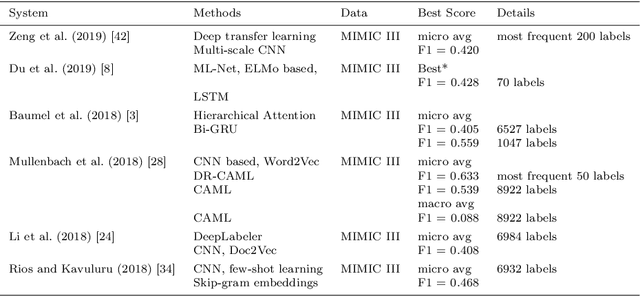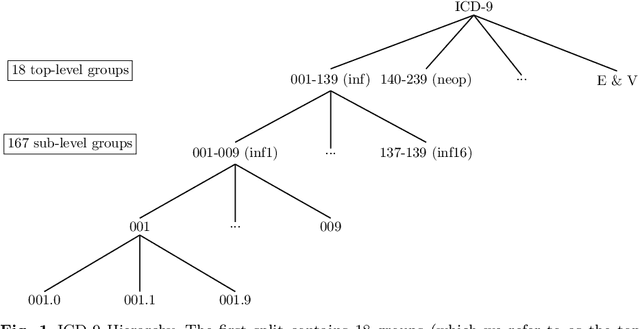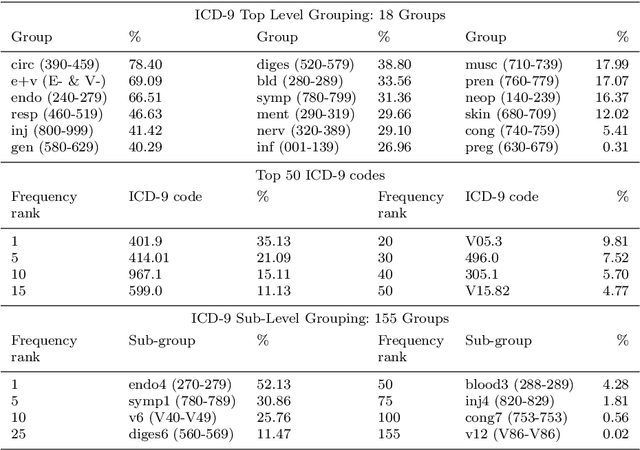Seeing The Whole Patient: Using Multi-Label Medical Text Classification Techniques to Enhance Predictions of Medical Codes
Paper and Code
Mar 29, 2020



Machine learning-based multi-label medical text classifications can be used to enhance the understanding of the human body and aid the need for patient care. We present a broad study on clinical natural language processing techniques to maximise a feature representing text when predicting medical codes on patients with multi-morbidity. We present results of multi-label medical text classification problems with 18, 50 and 155 labels. We compare several variations to embeddings, text tagging, and pre-processing. For imbalanced data we show that labels which occur infrequently, benefit the most from additional features incorporated in embeddings. We also show that high dimensional embeddings pre-trained using health-related data present a significant improvement in a multi-label setting, similarly to the way they improve performance for binary classification. High dimensional embeddings from this research are made available for public use.
 Add to Chrome
Add to Chrome Add to Firefox
Add to Firefox Add to Edge
Add to Edge